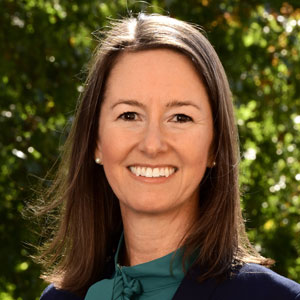Use of certain personal care products may affect pregnancy outcomes and breast cancer risk, according to Tamarra James-Todd, Ph.D. The NIEHS grantee explained the health and environmental justice implications of products containing endocrine disruptors during a March 26 webinar hosted by the Massachusetts Breast Cancer Coalition.

James-Todd, an environmental reproductive epidemiologist at the Harvard T.H. Chan School of Public Health, leads the NIEHS-funded Environmental Reproductive and Glucose Outcomes (ERGO) study, which explores the role of environmental factors on pregnancy and postpartum health.
As part of that work, she examines how phthalates, parabens, and other chemicals in everyday items — including nail polish and hair oils, food packaging, and medical tubing — can disrupt the body’s hormonal, or endocrine, system particularly during pregnancy.
Research conducted by James-Todd and others suggests that endocrine-disrupting chemicals may affect pregnancy outcomes and the likelihood that an individual develops breast cancer later in life.
“Pregnancy and postpartum health impact later life breast cancer risk,” said James-Todd. “While the data are complex, we know that many of the same underlying risk factors associated with gestational diabetes, preterm birth, and maternal obesity are also linked to later-life weight gain, insulin resistance, and cardiovascular disease — all of which increase breast cancer risk.”
Phthalates and pregnancy
Endocrine-disrupting chemicals called phthalates appear to disproportionately affect the health of minority populations. James-Todd found that compared to White women, non-Hispanic Black and Hispanic women had higher concentrations of phthalate metabolites, or evidence of metabolized phthalates, in their urine during pregnancy. Research indicates that in the U.S., Hispanic and Asian individuals have a higher risk of gestational diabetes and that non-Hispanic Black individuals have a 50% higher risk of preterm birth compared to White individuals.
Of note, James-Todd and colleagues modeled how the risk of preterm birth would change with reduced phthalate exposure, and they found the risk decreased significantly with lower exposure.
“These findings speak to the importance of designing our research with health equity in mind in order to reduce environmental health disparities,” said James-Todd.
Beauty justice
Racial and ethnic disparities also exist in terms of personal-care-product use, an important source of everyday chemicals. Analyses conducted by James-Todd showed that Hispanic and non-Hispanic Black women use more fragranced products and hair oils compared to non-Hispanic White women, who use more sunscreen.
“These differences may drive differences in chemical exposures because there are real differences in the concentrations of endocrine-disrupting chemicals in available consumer products,” said James-Todd, who calls differential access to safer personal care products a matter of beauty justice.
For example, when James-Todd examined hair product use, she found daily use of hair oils late in pregnancy was associated with an eight-day earlier delivery, a significant difference. However, her research also showed that reducing use of these products may reduce the likelihood of preterm birth, with subsequent possibility of reducing associated breast cancers later in life.
Access to safer products
As a part of James-Todd’s research in the Environmental Reproductive Justice Lab, a doctoral student in her group, Marissa Chan, has designed a study to identify where hair products with higher concentrations of environmental chemicals are sold. The goal: asking whether neighborhoods with different racial and ethnic as well as socioeconomic compositions have different availability to safer products. Her team has evaluated over 14,000 products across Boston neighborhoods and assigned each product with a hazard score. The study results demonstrate that stores in lower income neighborhoods and communities of color had a more than two-fold increased risk of carrying hair products with a moderate or high hazard scores compared to predominantly white or higher income communities.
“Environmental risk is not just an individual choice, even for these everyday chemicals that can be found in personal care products. Structural factors, such as place, access, and availability, matter with respect to environmental health disparities too,” said James-Todd.
(Susan Cosier is a contract writer for the NIEHS Office of Communications and Public Liaison.)










